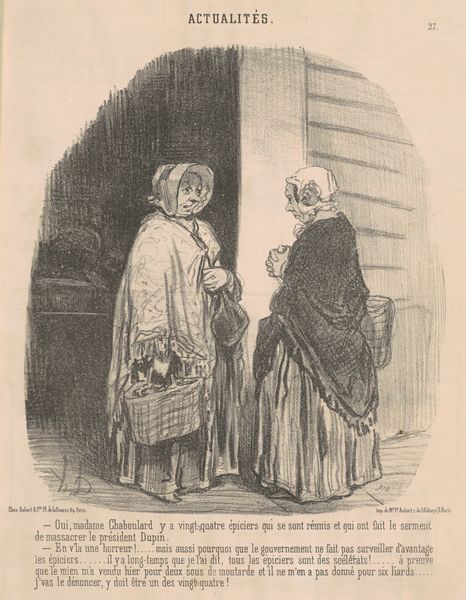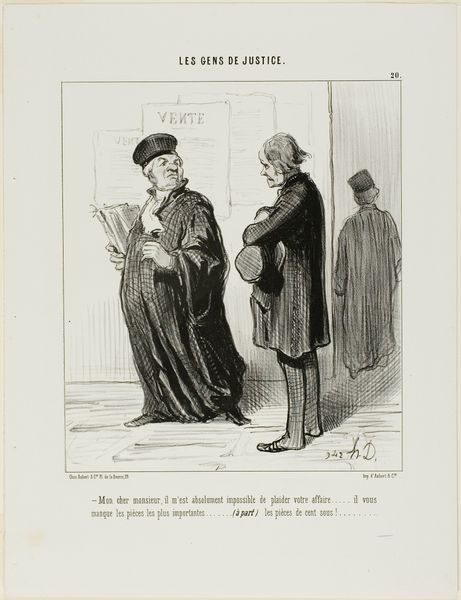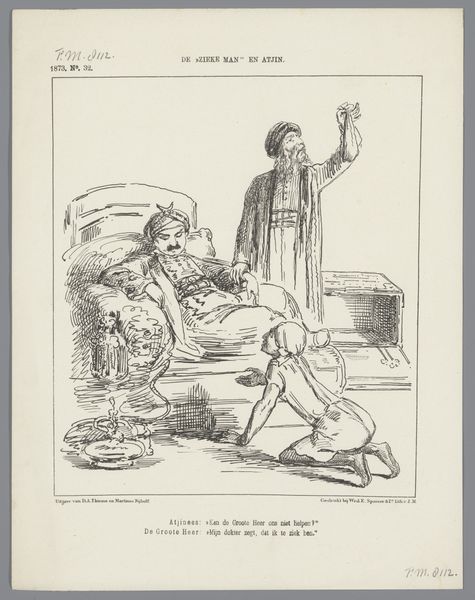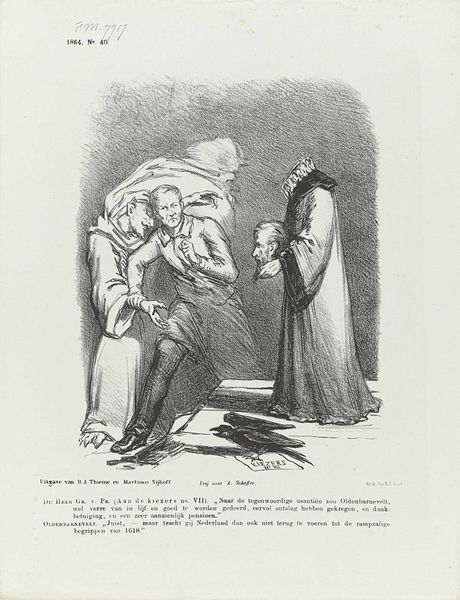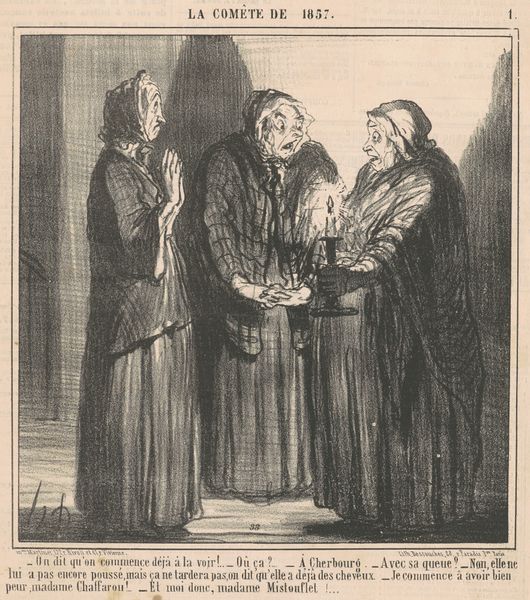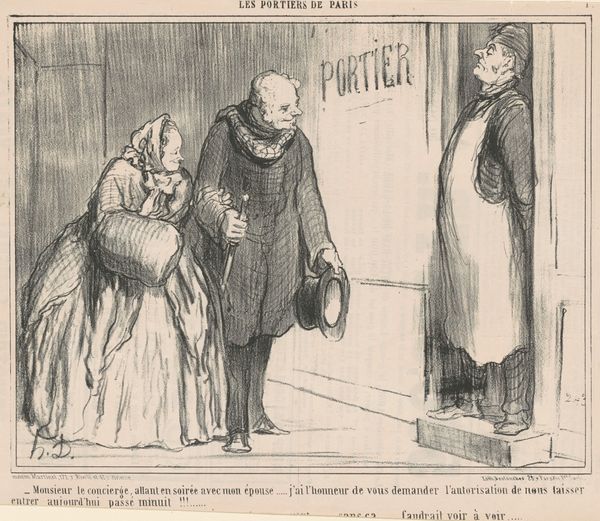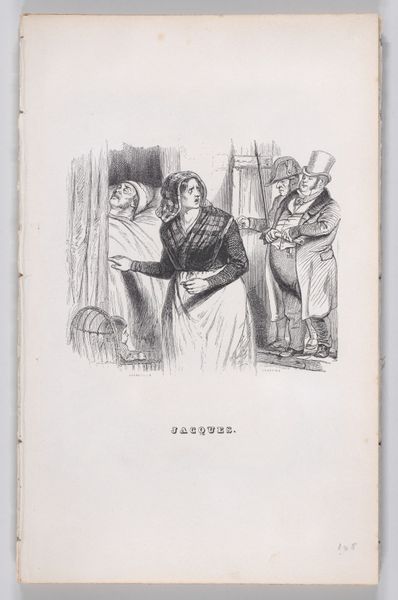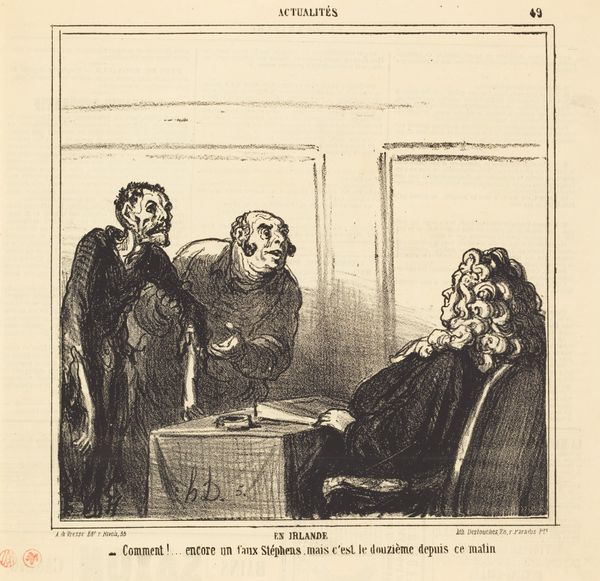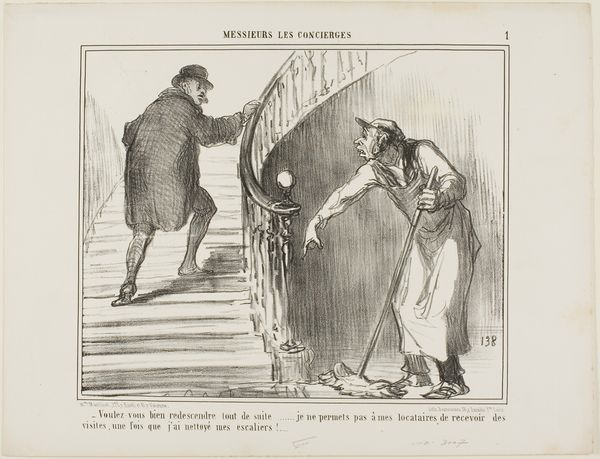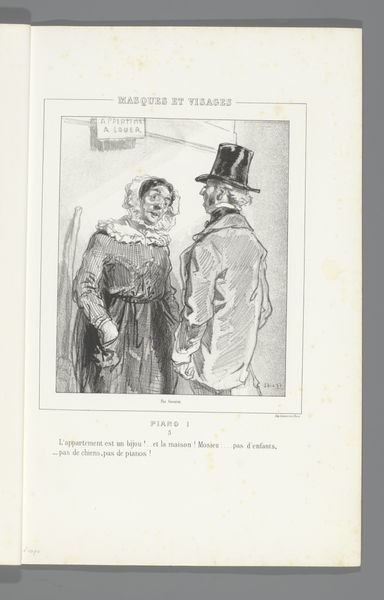
"- My God! Madame Bombec, what happened to you? - Don't mention it, my dear, it's horrible. The world is going from bad to worse, I would rather be janitor at the botanical garden! You know that Bézuchet from the fifth floor, the one that always insists that her good-for-nothing daughter who is fat around the hips has become..... I only replied: Ah, well! - And that's the person who… - Of course, even a blind man can see that!,” plate 30 from Types Parisiens 1840
0:00
0:00
drawing, lithograph, print, paper
#
portrait
#
drawing
#
lithograph
# print
#
french
#
caricature
#
paper
#
france
#
genre-painting
Dimensions: 191 × 232 mm (image); 275 × 358 mm (sheet)
Copyright: Public Domain
Curator: What a marvelous study of character. We’re looking at a lithograph by Honoré Daumier, titled "- My God! Madame Bombec, what happened to you? - Don't mention it, my dear, it's horrible. The world is going from bad to worse, I would rather be janitor at the botanical garden! You know that Bézuchet from the fifth floor, the one that always insists that her good-for-nothing daughter who is fat around the hips has become..... I only replied: Ah, well! - And that's the person who… - Of course, even a blind man can see that!," from his "Types Parisiens" series, created around 1840. It’s held at The Art Institute of Chicago. Editor: It's like overhearing a juicier-than-average conversation between neighbors. The visual cacophony – the wild, scribbled lines – matches the frantic energy of the gossip itself! The figure bandaged like a mummy—totally caught my eye; what's her story? Curator: Ah, the perpetual injury sustained while living in society! Daumier was masterful at using caricature to dissect the Parisian bourgeoisie, revealing their petty dramas and inflated self-importance. These “types” offer insight into 19th-century social dynamics, and these lithographs made it easy to disseminate this form of criticism widely. Editor: Criticism! Right. He’s not just documenting fashion or architecture; he's building an attitude about this particular social bubble. Those frantic lines don't feel accidental; they feel charged with judgement, almost cruel. There's even something a little dreamlike to the image because those scribbles also suggest an energetic freedom of the artistic hand. Curator: His genius lies in that tension! Daumier positions us as eavesdroppers, inviting us to laugh *with* and *at* these women. The exaggeration is key. Look how the lithographic technique – with its bold lines and stark contrasts – heightens the satirical impact. Daumier's a master of making ink on paper a mirror to society's follies. He used art for his beliefs; an artwork is successful insofar as it affects what we know and feel. Editor: That phrase in the title – "I’d rather be a janitor at the botanical garden"– that's the best! He lets these tiny phrases encapsulate their whole, messy existence; almost like poetry. I have a fondness for their worldliness, no matter how cringe-worthy or seemingly trivial! I feel like I just found some new old friends. Curator: Precisely! It speaks to the enduring human need for community, however imperfect, doesn’t it? Even gossip has its place in forging social bonds, reflecting desires and values, both on a personal scale, but also for society at large. Editor: It makes me realize how little things have changed, the more things change, I guess? I have to go make some phone calls, I just got great ideas.
Comments
No comments
Be the first to comment and join the conversation on the ultimate creative platform.
